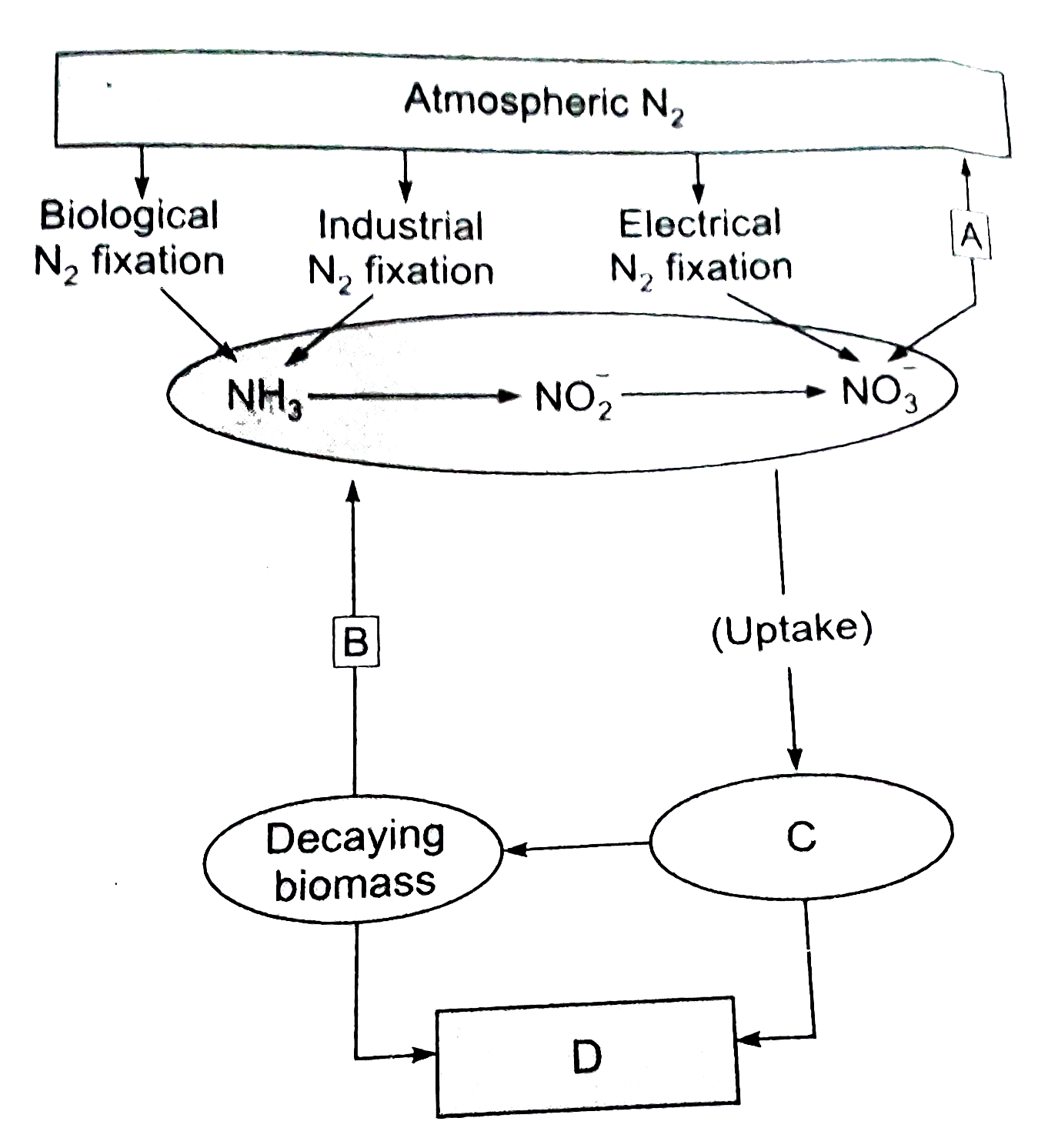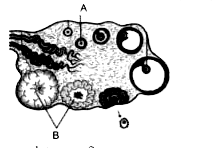In knee jerk reflex, A functions as receptor organ while B functions as effector organ, Choose the option which gives the correct answer for the blanks in above statement.
A-Patella bone B-Biceps muscles
A-Quadriceps femoris muscle B-Hamstring muscle
A-Hamstring muscle B-Quadricep femoris muscle
A-Patellar tendon B-Quadriceps femoris muscle
The correct Answer is:D
To solve the question regarding the knee-jerk reflex, we need to identify the receptor organ (A) and the effector organ (B) involved in this reflex action. Here’s a step-by-step solution:
Step 1: Understand the Knee-Jerk Reflex
The knee-jerk reflex, also known as the patellar reflex, is an involuntary response that occurs when the patellar tendon (located just below the kneecap) is tapped. This action stretches the tendon and the quadriceps muscle, leading to a reflexive contraction.
Hint: Remember that reflexes involve a stimulus that triggers a response without conscious thought.
Step 2: Identify the Receptor Organ (A)
In the knee-jerk reflex, the receptor organ is the part of the body that detects the stimulus. When the patellar tendon is tapped, the stretch receptors (muscle spindle fibers) in the quadriceps muscle sense this stretch. Therefore, the receptor organ (A) is the patellar tendon.
Hint: Think about what part of the body is responsible for sensing the stretch when the knee is tapped.
Step 3: Identify the Effector Organ (B)
The effector organ is the part of the body that carries out the response to the stimulus. In the knee-jerk reflex, the contraction of the quadriceps muscle causes the leg to kick out. The muscle that is primarily responsible for this movement is the quadriceps femoris muscle, which acts as the effector organ (B).
Hint: Consider which muscle is responsible for the movement that occurs after the reflex is triggered.
Step 4: Formulate the Answer
Based on the above analysis, we can fill in the blanks in the statement:
- A (receptor organ) = Patellar tendon
- B (effector organ) = Quadriceps muscle
Final Answer
In knee jerk reflex, patellar tendon functions as receptor organ while quadriceps muscle functions as effector organ.
---
The knee-jerk reflex, also known as the patellar reflex, is an involuntary response that occurs when the patellar tendon (located just below the kneecap) is tapped. This action stretches the tendon and the quadriceps muscle, leading to a reflexive contraction.
In the knee-jerk reflex, the receptor organ is the part of the body that detects the stimulus. When the patellar tendon is tapped, the stretch receptors (muscle spindle fibers) in the quadriceps muscle sense this stretch. Therefore, the receptor organ (A) is the patellar tendon.
The effector organ is the part of the body that carries out the response to the stimulus. In the knee-jerk reflex, the contraction of the quadriceps muscle causes the leg to kick out. The muscle that is primarily responsible for this movement is the quadriceps femoris muscle, which acts as the effector organ (B).
Based on the above analysis, we can fill in the blanks in the statement:
- A (receptor organ) = Patellar tendon
- B (effector organ) = Quadriceps muscle
In knee jerk reflex, patellar tendon functions as receptor organ while quadriceps muscle functions as effector organ.
Topper's Solved these Questions
Similar Questions
Leydig cells secrete A under the influence of B which is secreted by C . Choose the option which gives the correct answer for blanks in above statement
View SolutionAt neuromuscular junction,( a ) released by ( b) binds to its receptors present on ( c ) thus generating action potential in latter.Choose the option which gives the correct answer for the blanks in the statement given above.
View SolutionLife of Petromyzon begins in _A_ and ends in _B_ Select the option which gives correct answer for blank in above statement
View SolutionIndividual muscle bundle is known as A_ and many bundles are held together by a collagenous sheath of connective tissue called_ B Choose the option which gives the correct answer for blanks in above statement.
View SolutionChoose the option which gives the correct order of the organisms in the ascending order of their energy level.
View SolutionStudy the cycle shown below and select the option which gives correct words for all the four blanks A, B, C and D.

View SolutionFasciola infects its primary host at _A_ larval stage and its secondary host at _B_ larval stage. Select the option which gives correct answer for blanks in above statement.
View SolutionStudy the cycle shown in Fig. 12.7 and select the option which gives correct words for all the four blanks A, B, C, and D.

View SolutionNerve fibres from olfactory receptor transmit their impulses to A while impulses from gustatory receptors are transmitted to B of cerebrum.Choose the option which gives the correct answer for A and B
View SolutionThe figure shows a section of human ovary. Select the option which gives the correct identification of either A or B with function/characteristic.

View Solution